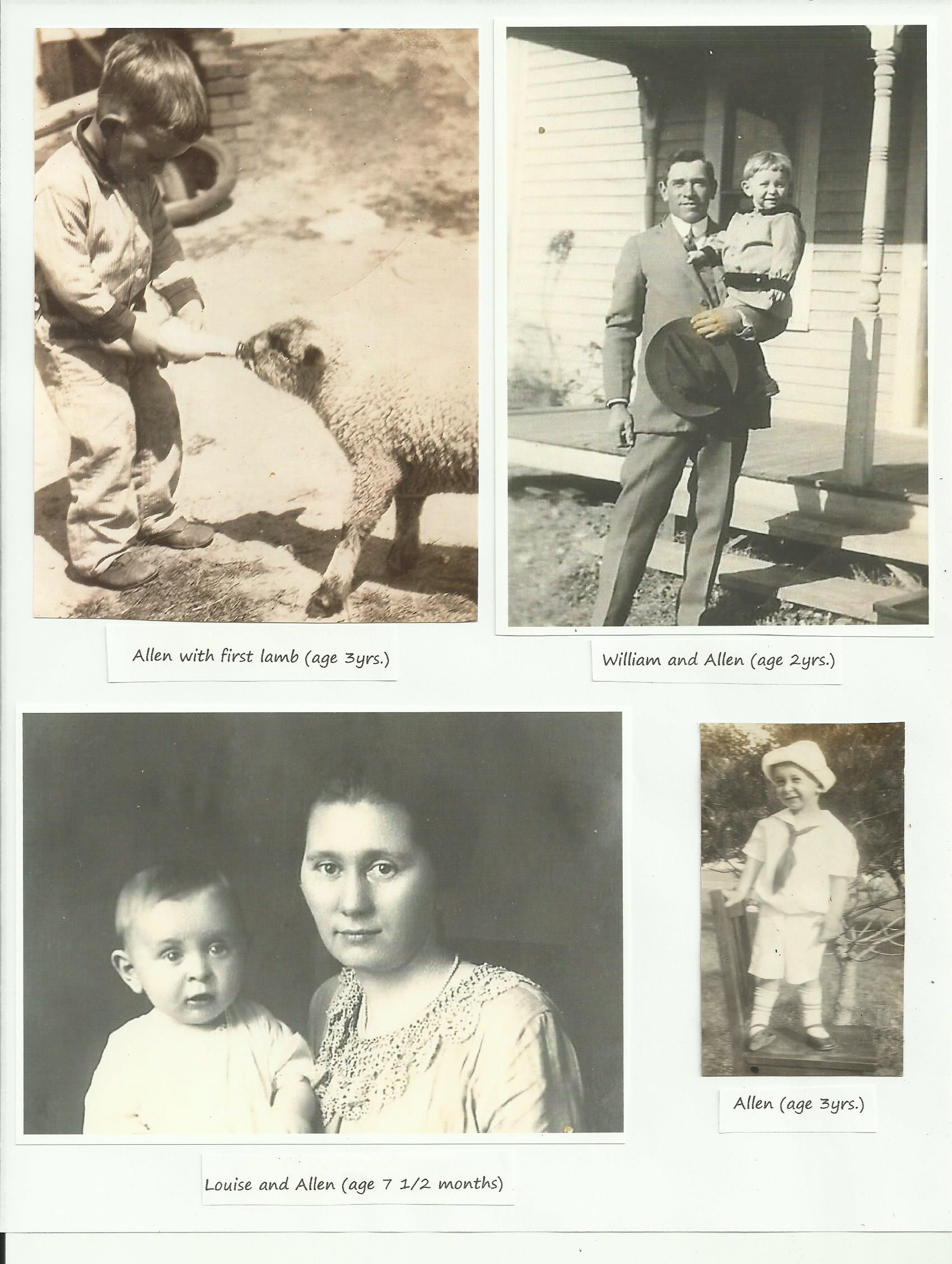
Allen J. Moyer was no ordinary man. He would be classified as an architect of his own destiny. In every challenge, Allen would meet it head on and tackled it fearlessly, often coming up with solutions that were outside the box. However, his story actually begins with his father's and his mother's journey to Deer Creek, Oklahoma.

His father, William Quintus Moyer, was born September 14, 1886 in Fortuna, Missouri in Maniteau County. William and his family traveled to Deer Creek when he was only 14 years old. William wrote, "...came to Grant Co. on Mar. 1, 1901." [1] His father was the Rev. Manasses Samuel Moyer. His mother was Anna Maria Eymann. They bought a farm two miles west and one mile north of Deer Creek from B. F. Klump. The farm is still in the Moyer family.[2] Rev. Moyer was pastor of the Deer Creek Mennonite Church from March 1, 1901 to December 1903.[3] He was a man who was ahead of this time. He was fluent in both German and English. Manuscripts of his sermons were written in both languages as well. He met with some resistance initially when he wanted to include English in the church services. He remedied that by using German in the Sunday morning worship service and English in the evening worship service. The introduction of English would be very useful in the years to come, as the country would become suspicious of anything German. "In 1902 the first frame Church was built, and dedicated to the worship of God our heavenly Father by Rev. Manassas Moyer."[4] Unfortunately, Rev. Moyer died unexpectedly of a heart attack December 7, 1903.[5] Will Moyer was sixteen years old and would be the head of the household. It would become the responsibility of Will to take over the farming and provide for his mother and remaining siblings.
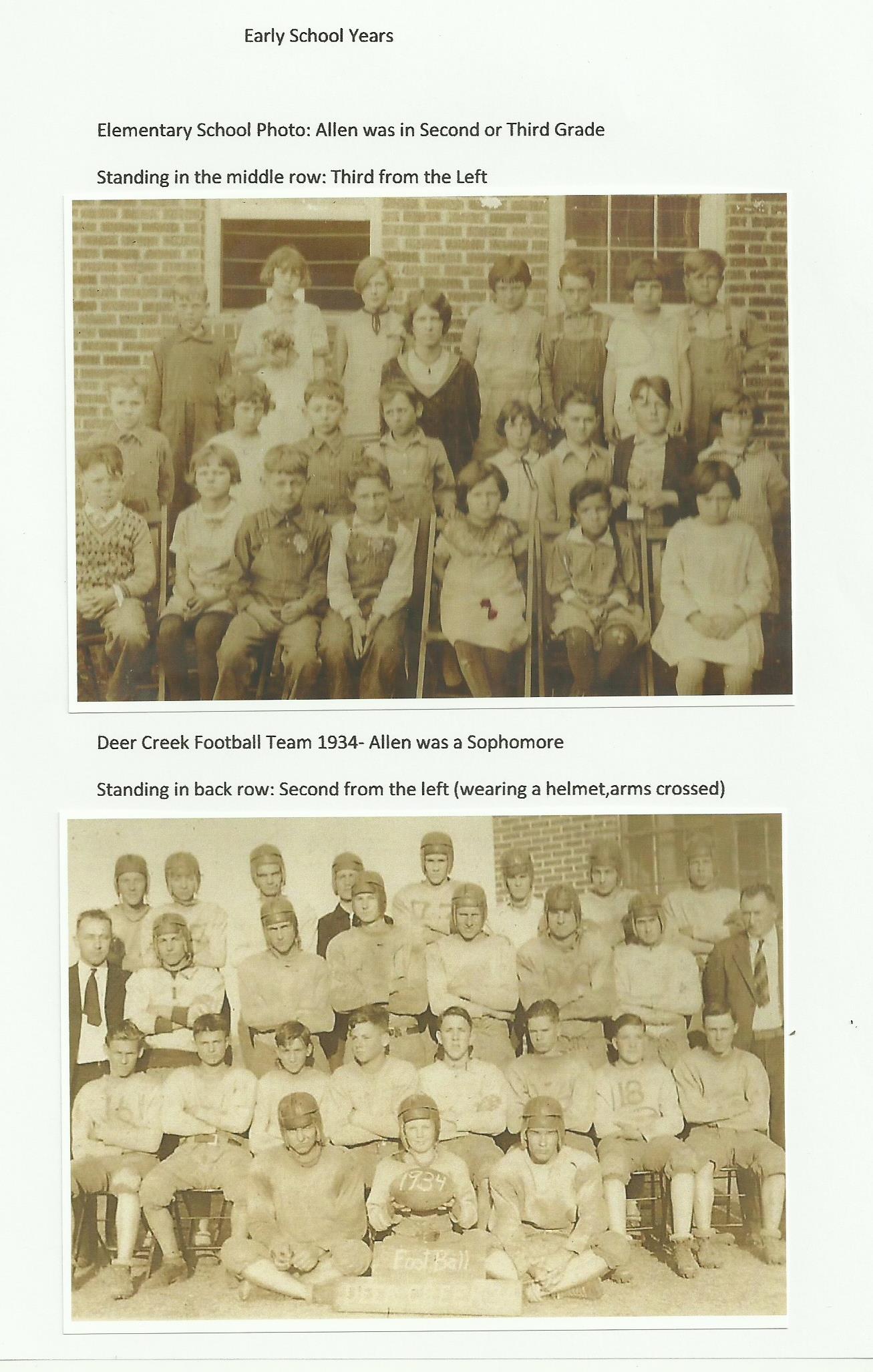
Interestly, Allen's mother, Louise Elizabeth Latschar, arrived with her family to Grant County, during the summer of 1901, where they lived on a farm 3 miles south of Deer Creek. Louise was eleven.[6] Her parents, Christian Bachman Latschar and Elisabeth Neu, were born in Germany, but emigrated to the United States. They settled near Moundridge, Kansas, where Louise was born May 18, 1890. Stories were told of Christian and Elisabeth. "Christian was known for his sense of humor and his pleasant singing voice. Once when he was singing lustily while driving a horse and wagon along a road, a threshing crew that he was passing stopped work to listen until he past. Elisabeth loved the outdoors. She had a large garden, which furnished most of the family's food supply, as well as chickens, turkeys, geese, and even guinea hens. The garden was her pride and joy and she cared for it herself, doing the plowing with a horse and walking plow."[7]
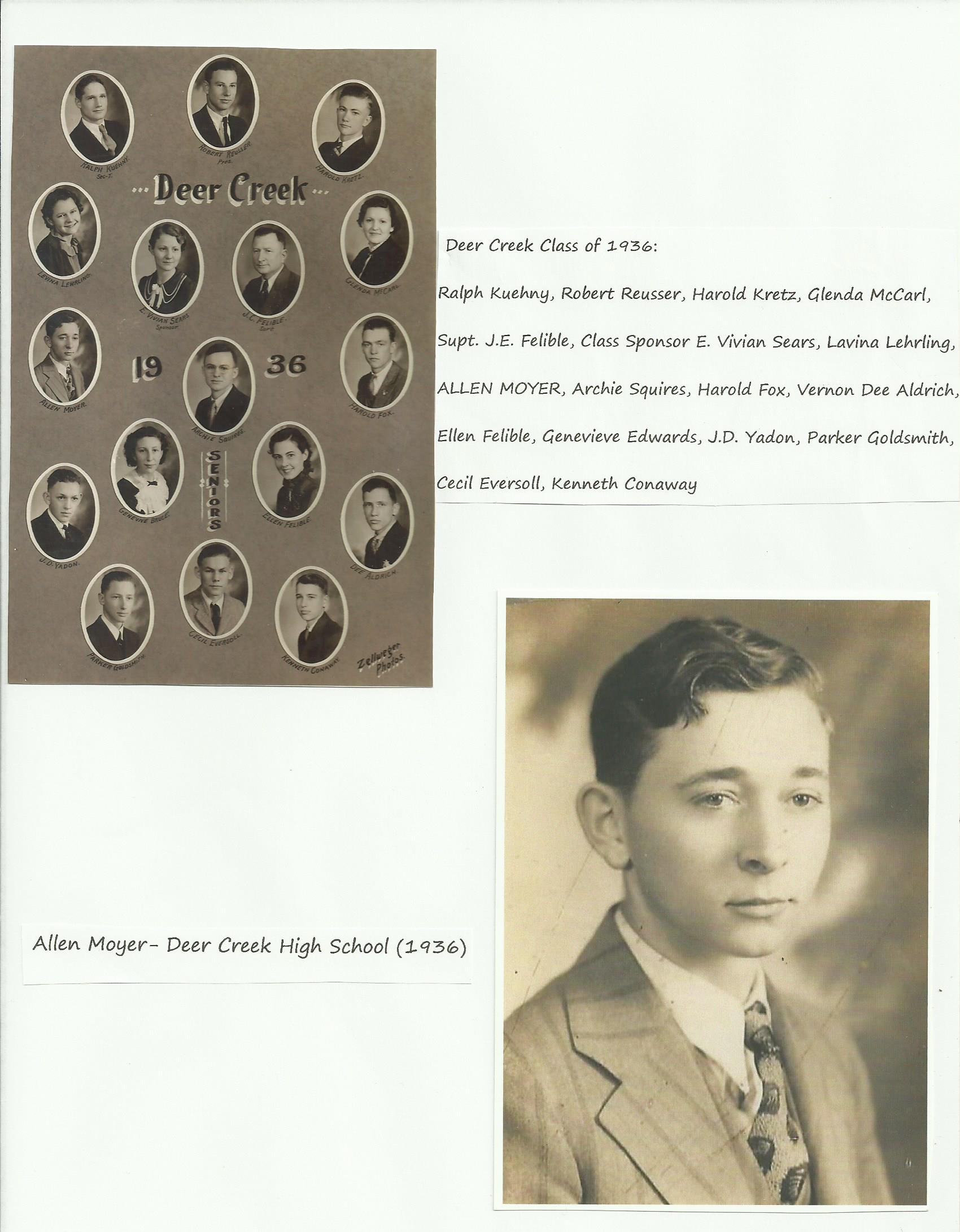
Both the Moyer and Latschar families used the german lauguage in the home and were members of the Mennonite Church in Deer Creek.[8] Mary Duerksen added that the "Latschar family spoke German much of the time until the first World War, anything German became suspect. Mom & Dad must have spoken it at home also-- I believe that Mom said that Allen's first words were in German."[9]
On January 1, 1915 Will and Louise were married and started life together on the Moyer farm.[10] Their lives together would be filled with love and hard work. Looming ever so near were the darkening clouds of unrest and social upheaval. The year 1917 would be a volatile time in the world's history. April 6, 1917 President Woodrow Wilson of the United States had formally declared war on Germany. However, as the world was moving uneasily toward a fragile peace, thousands of miles away on the small modest farmstead in Deer Creek, Oklahoma Will and Louise were anxiously awaiting the arrival of their first child.
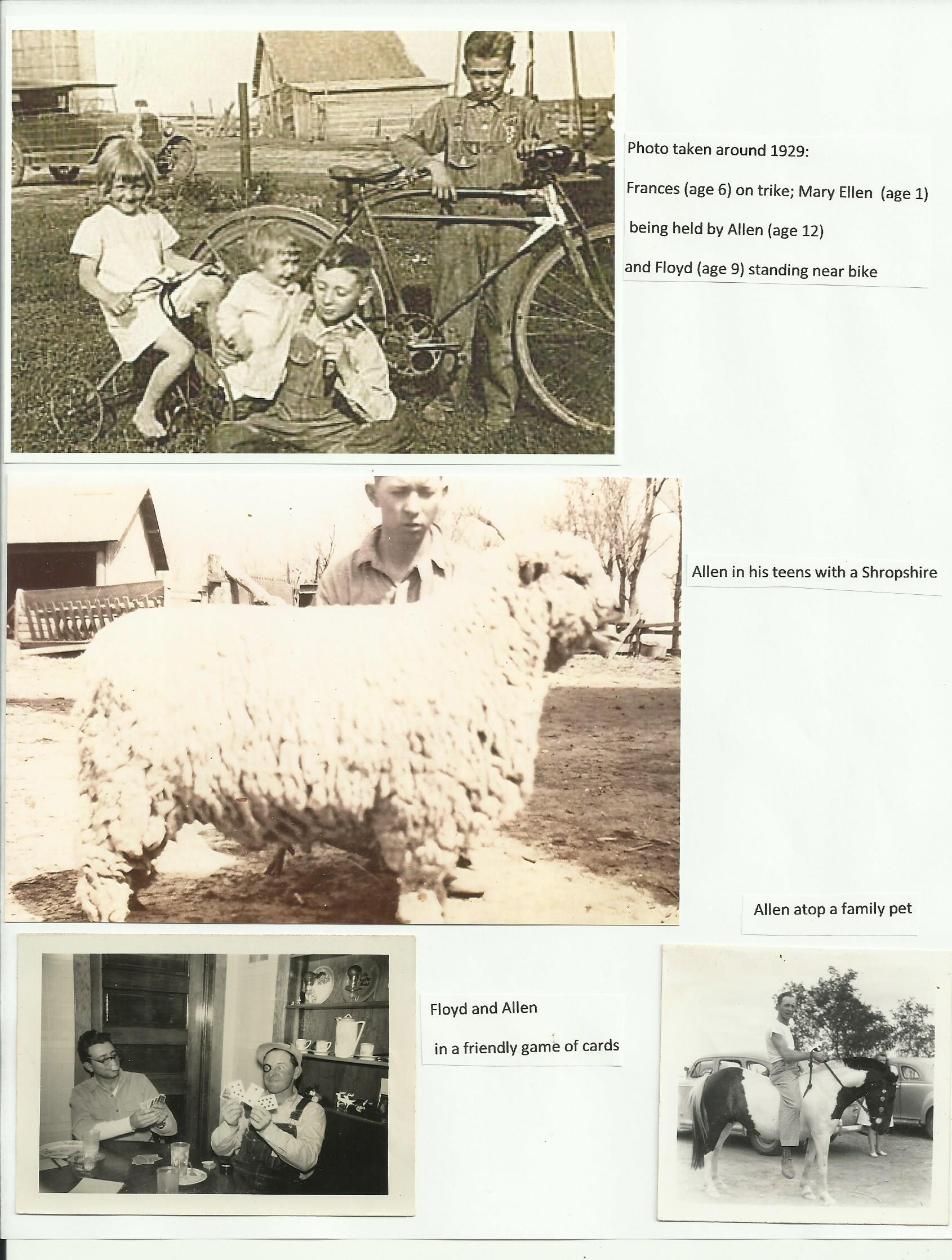
On Thursday, December 6th, Dr. J.F. Martin, a local physician, had been called to the Moyer farm to deliver a baby. Allen John Moyer was born at 10:00 pm. He weighed 7lbs. and was 19 1/4 inches long. [11]
Allen John Moyer would enter a world ripe for war. In Russia, just a month prior to Allen's birth, Vladimir Lenin and Leon Trotsky had overthrown the Provisional Government in what would be called the October Revolution ( Oct. 24-25 according to the Russian calendar) [12] However back at Deer Creek, life would be centered around work and family.
There were four children in the Moyer household. Two sons; Allen John was born December 6, 1917, followed by Floyd Milton, who was born January 1, 1920 and two daughters; Frances Louise born May 14, 1923 and Mary Ellen,who was born March 25, 1928 and is the surviving sibling. Mary wrote the following that gave insight into life on the Moyer farm in the 1930's.
A few years ago, I wrote a short description of my early childhood (1930's to mid 1940's) for our kids and thought it might do as a picture of Allen's life when he was around the age of 12 to when he was drafted in 1942. The birth of my siblings - Allen, Floyd & Frances - spanned 5 years 1918-1923. I tagged along five years later. The 3 of them all made occasional comments about the fact that I hadn't had to live through the really financially tough depression times and Allen's earlier years may have been slightly different. Here are some selected paragraphs: Life at home in an old farm house was simple, non-luxurious, labor-intensive until electric power became available in rural Oklahoma after World War II. We used kerosene lamps, we carried water in from the well and filled a five gallon crock for drinking and cooking about every three days during summers, we put a 50 lb. chunk of ice in an ice box to keep food slightly cool; in the winter we had a coal-burning stove in the living room (no such thing as central air - but we would race downstairs from ice cold bedrooms to dress behind the stove); instead of a bathroom, we had an outhouse, a number of chamber pots, and Saturday night baths in an oversized tin tub brought into the kitchen for that purpose. Life was always busy. Dad took care of the field work, live- stock and chickens. Mom washed, ironed, baked, cleaned and sewed many of our clothes. We children were expected to help- and did so according to age, ability and temperament. The whole family loved reading. Often all six of us would sit around the dinner table while each read a different book or magazine. It was not unusual for us to see no one except family during the week-probably half the reason for church was social. Mom might invite some family over for dinner (noon meal), otherwise we would be home for a long and often boring afternoon. This may be one reason we grew up playing a lot of games together.[13]
Mary offered several insights into the family dynamics, specifically how they got along. "I believe we all felt a family-loyalty, a concern for each other, and tended to be respectful of each other's space - not always easy in a small old farm house. That is not to say that there were never arguments, strong disagreements, or yelling (mostly about who didn't get their chores done), but I can't remember any long-lasting hostility - and we had lots of laughs. There were no taboo topics and discussions about petty issues or serious ones (religion, philosophy, politics. farm business) were quite open and often energetic or heated. When we were all young rural life and had a father who was certain that one trip into town a week was plenty, enforced a lot of togetherness - so why not make use of each other's company. We played a lot of games. Because of age difference I was often told I was too young to play whatever the current game was - but one of my brothers (I think Allen) would usually relent, be a good big brother & let me take on an age-appropriate part of the game, eg. play the dummy hand in Rook (where you only turn over the cards)"[14]
As a firstborn Allen was very well-loved and treasured by his family and he appeared to have enjoyed a pretty stable childhood. According to Allen's baby book, his mother writes that Allen took his step on the 9th day of Oct in the year of 1918 when our Baby was ten months and 2 days old.[15] She also writes that his first prayer was said at the age of 2 yrs. The prayer was "Abba liebour Vater im hymnal, amen". (Translated: Father beloved God in heaven,Amen.) [16]
Mary remembers him as a:
He spent time with his Grandmother Anna Moyer and Aunt Selma who lived in town. He also spent a lot of time with his Latschar Grandparents, aunts, and uncles, who lived on a farmstead located south of Deer Creek.typical eldest child - pusher of boundaries & tester of limits. He did not avoid arguments and had far more of them with our parents than did Floyd.
He did however have an unfortunate accident, when he was seven years old. He liked climbing into the hayloft in the barn. One day, when playing in the loft, he slipped and fell down into the barn walkway below. Dad wrote about this, "He was unconscious when brought to the house and remained that way until the next morning. The doctor said his skull was fractured and ordered him kept in bed for a week." He completely recovered.[17]
He made friends easily. One of his best buddies was his neighbor, Ralph Kuehny. A story was told about Allen and Ralph as second graders. They didn't feel well after lunch, so they decided to walk home. It was a three mile trek. Louise was surprised to see Allen home, so she asked him why he was home so early. He told her that Ralph and he didn't feel well, so they just came home.[18] As a youngster he and his siblings attended Deer Creek School. It was in the lower grades that he acquired the nickname, "Hoot". Mary shed some light on this. She writes, "He was the only one of the 4 of us who somehow 'earned' a nickname (a coveted way to show coolness at the time). I don't know who started it or when it began, but he first became Al, then Hoot Owl, then Hoot -- a name used for him by his friends for the rest of his life."[19]
Transportation consisted of catching rides with neighbor girls in a Model T, sometimes riding a horse, or walking the distance, cutting across the fields to save steps.[20] Summers were spent working on the farm and sometimes also working for neighboring farmers, mainly with the threshing.[21]
Memories of high school name Agriculture and History classes as the favorite subjects. He participated in sports, band, and in FFA activities.[22] Allen's involvement with sports included football, basketball, and tennis. "During his late teen years, he convinced Dad to let him (with Floyd's help) use the land west of the house to make a tennis court. I remember their spending days smoothing and packing the dirt before marking out the court. Friends of both Floyd and Allen showed up many a Sunday afternoon to play".[23] Other favorite times were swimming, hunting, fishing and ice skating.[24]
Allen showed leadership skills early in his life. "He was the leader of most of his & Floyd's joint activities. One summer they built an outdoor shower by placing an L shaped wall against a building, putting up braces to hold an old barrel, using a hose to fill it & letting the sun do the rest. It was mostly for those in the family doing field work, but we all enjoyed it occasionally. Another of their projects was figuring out how to mount a small saw blade on an old sewing machine and turning it into a treadle-driven jigsaw. He also set up a wind-charger to keep a couple of batteries charged so they could listen to the radio." [25] Mary also felt that Allen was somewhat adventurous. He made a trip to San Francisco to the World's Fair and brought everyone in the family a small souvenir gift.[26] The World's Fair was held in San Francisco in 1939. It was officially called the Golden Gate International Exposition. It was San Francisco's third and last World's Fair.[27]
Allen was always ahead of his time. As a student playing basketball, it was the norm to shoot with two hands. Allen revised this by placing one hand on the top of the ball and the other hand underneath to balance the ball. This is commonly done now. However, Allen was benched for his revision.[28]
During his young adult years, softball was a regular pasttime, and summer evenings were spent playing in church softball leagues. [29]
Allen was one of fifteen in the Graduating Class of 1936. Other members include the following: Vernon Dee Aldrich, Ralph Kuehny, Harold Kretz, Archie Squires, Robert Reusser, Parker Goldsmith, J.D. Yadon, Glenda McCarl Slusher, Lavina Lehrling, Kenneth Conaway, Ellen Felible Jinkens, Harold Fox, Cecil Eversoll,and Genevieve Bruce Edwards. Senior Sponsor was E. Vivian Sears and Superintendent was J.C. Felible. [30]
After graduation Allen attended Bethel College in North Newton, Kansas. A copy of his Bethel College Scholarship Report revealed that he attended Second Semester as a Freshman in 1937-1938[31]. In 1938-1939 he attended First and Second semesters at University Preparatory School and Junior College in Tonkawa, Oklahoma receiving a football scholarship for one year.[32] After his release from the Civilian Public Service, Allen would return to Bethel College as a Junior, attending the first and second quarters in 1946-1947.[33]
In 1942 Allen and Floyd were drafted, World War II saw the rise of patriotism. Every young man and woman were eager to serve their country, after the attack on Pearl Harbor on December 7, 1941. Allen had just turned 24 the day before. Mary wrote, "We were raised according to Mennonite doctrine to believe that war was wrong. When Floyd and Allen received their draft notices (1942) their options were the subject of many conversations. These always ended with Dad saying they had to decide for themselves what to do -- no one could make that decision for them. Floyd enlisted in the Navy, wearing a uniform, but essentially a non-combatant. Both would serve a full four years in the service." [34]
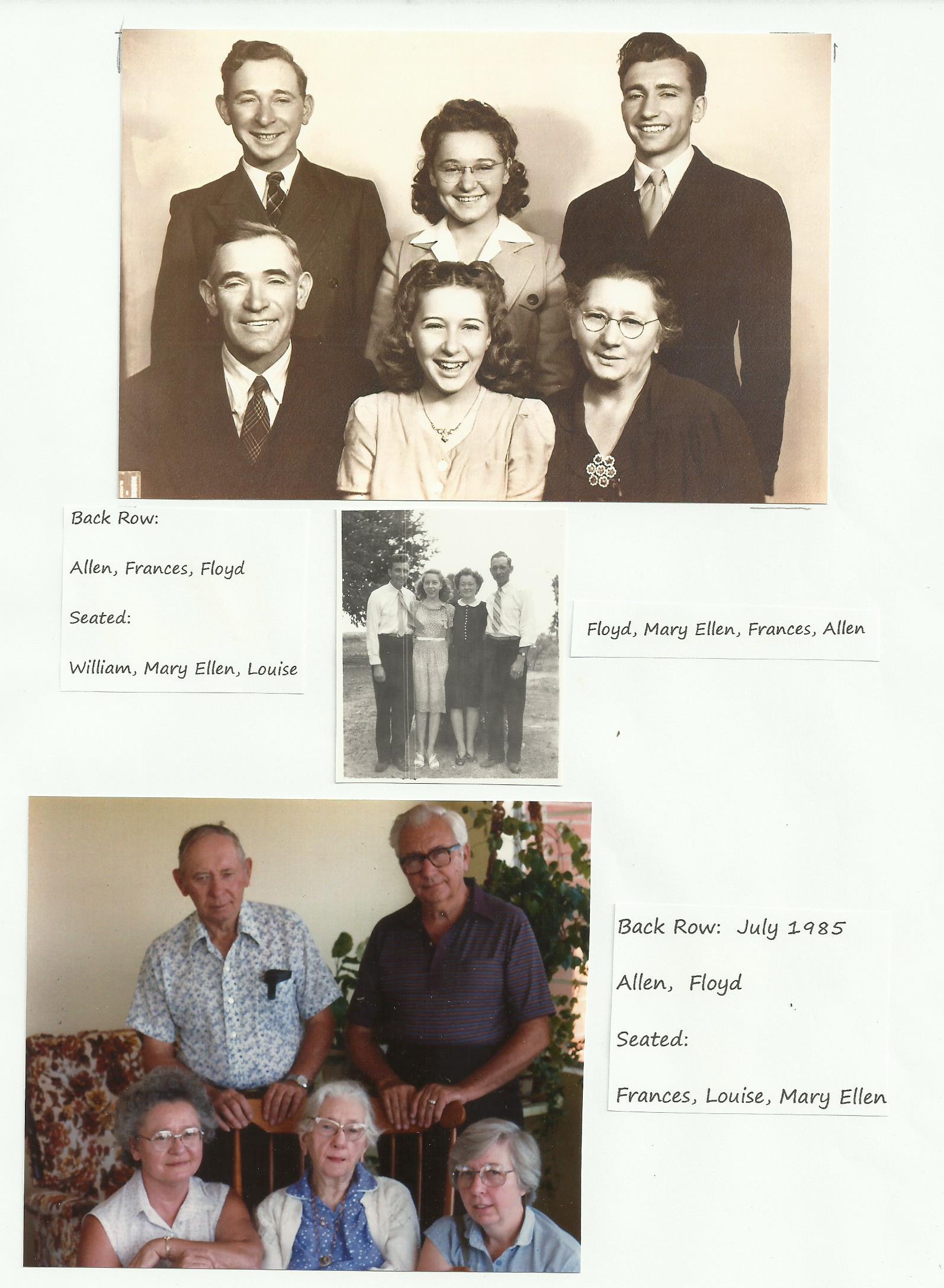
Copyright Rose Moyer, 2015, All rights reserved.